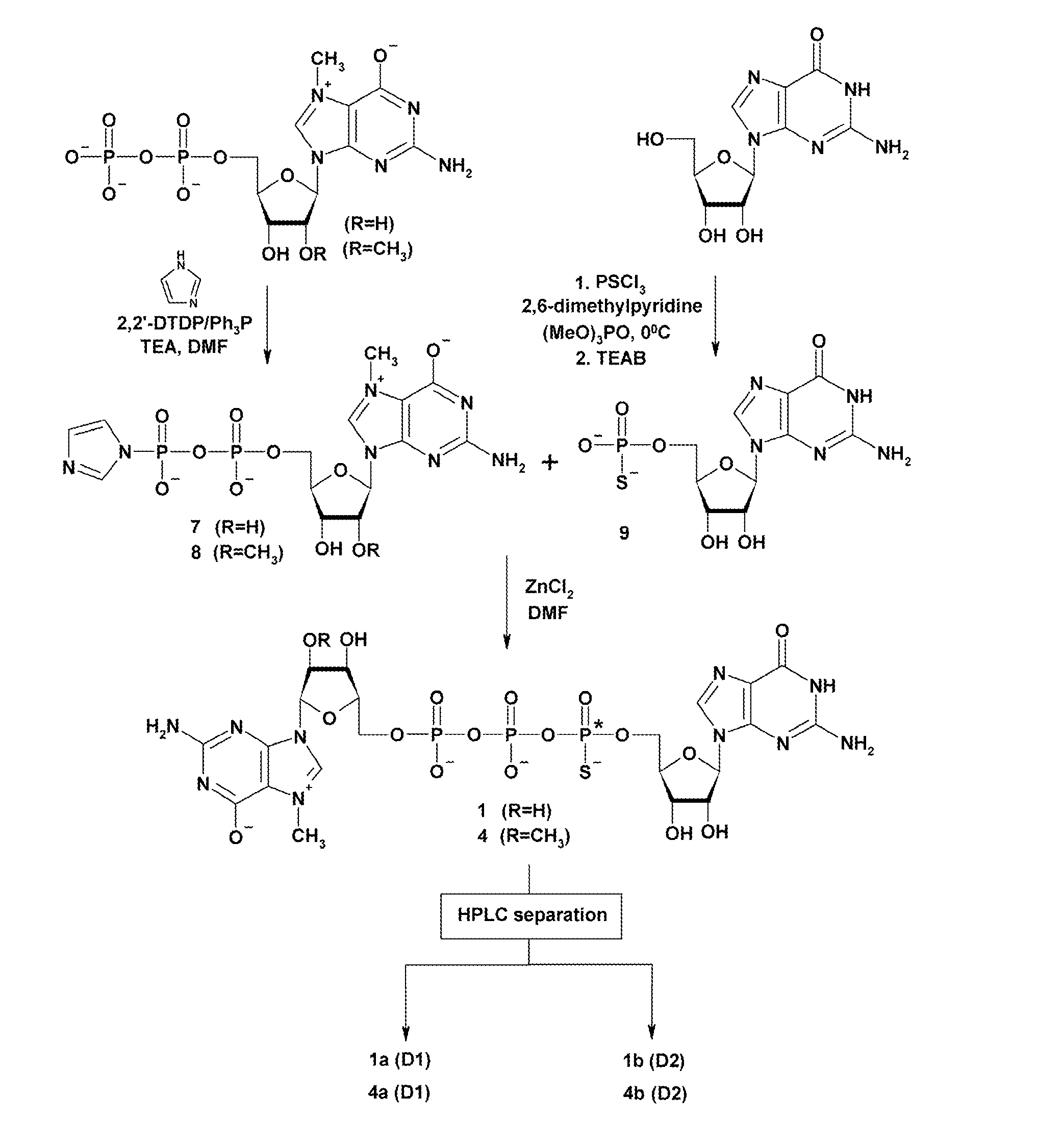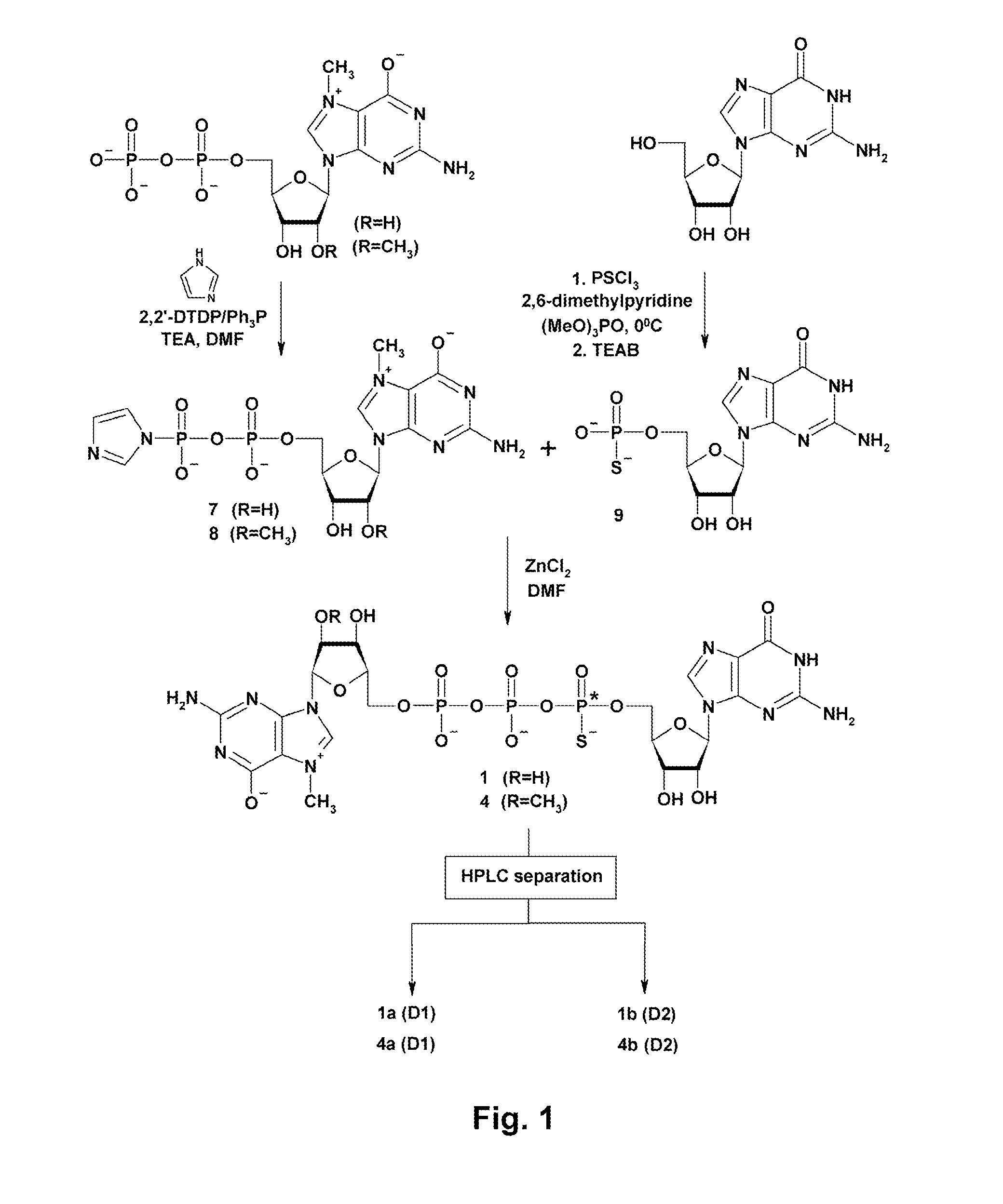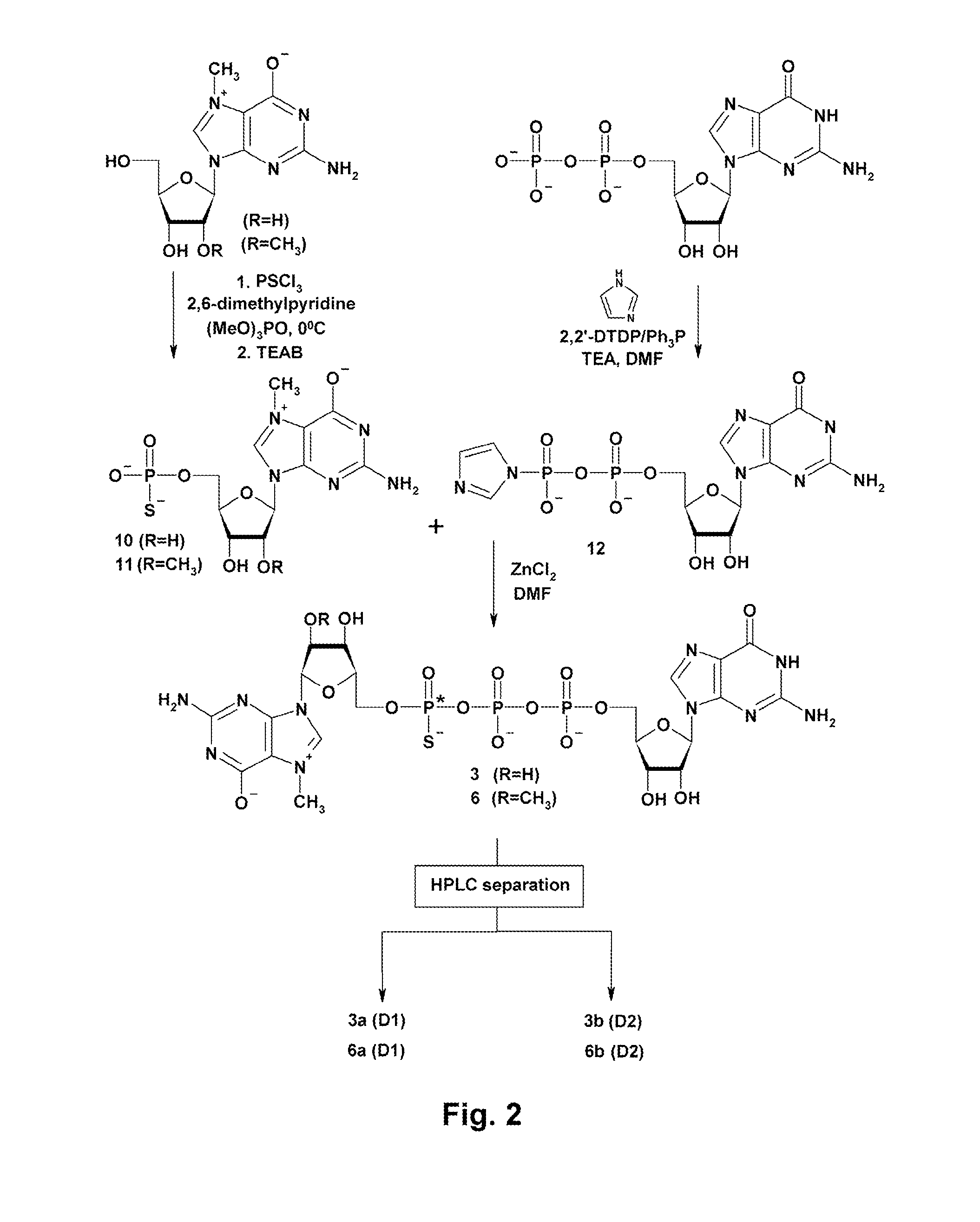Synthesis and Use of Anti-Reverse Phosphorothioate Analogs of the Messenger RNA Cap
- Summary
- Abstract
- Description
- Claims
- Application Information
AI Technical Summary
Benefits of technology
Problems solved by technology
Method used
Image
Examples
example 1
General Chemical Procedures
[0034]Intermediate nucleotides were separated by ion-exchange chromatography on a DEAD-Sephadex A-25 (HCO3- form) column using a linear gradient of triethylammonium bicarbonate (TEAB) in deionized water, and after evaporation under reduced pressure with addition of ethanol, were isolated as triethylammonium salts. Final products (cap analogs) were separated by either analytical or semipreparative RP HPLC and, after repeated freeze-drying, were isolated as ammonium salts. Analytical HPLC was performed on a Spectra-Physics SP8800 apparatus equipped with a Supelcosil LC-18-T reverse-phase column (4.6×250 mm, flow rate 1.3 ml / min) with a linear gradient 0-25% of methanol in 0.05 M ammonium acetate buffer at pH 5.9, using UV-detection at 260 nm. Semi-preparative HPLC was performed on a Waters 600E Multisolvent Delivery System equipped with a Waters HR-C-18 reverse-phase column (19×300 mm, flow rate 5.0 m / min) with a linear gradient of methanol in 0.05 M ammoniu...
example 2
General Procedure for Nucleotide Imidazolide Derivatives (GMP-Im, m27,2′-OGMP-Im, GDP-Im, and m27,2′-OGDP-Im) (7, 8, and 12-15)
[0037]See T. Mukaiyama, et al. “Phosphorylation by oxidation-reduction condensation. Preparation of active phosphorylating reagents”, M. Bull. Chem. Soc. Jpn, vol. 44, 2284 (1971). An appropriate nucleotide (1 eq. TEA salt), imidazole (8 eq.), and 2,2′-dithiodipyridine (3 eq.) were mixed in DMF (approx. 2.5 ml / 100 mg of nucleotide). Triethylamine (2 eq.) and triphenylphosphine (3 eq.) were added, and the mixture was stirred for 6-8 h. The product was precipitated from the reaction mixture with anhydrous sodium perchlorate (1 eq. per one negative charge) dissolved in dry acetone (approx. 8 ml / 1 ml of DMF). After cooling to 4° C. the precipitate was filtered, washed repeatedly with cold, dry acetone, and dried in vacuum over P4O10. Yields were 80-100%. In case of m7GMP, due to its lower solubility in DMF, 2-fold larger excess of reagents was used, and reaction...
example 3
General Procedure for Nucleoside 5′-O-phosphorothioates (9-11)
[0038]A suspension of an appropriate nucleoside (1 eq, dried overnight in vacuum over P4O10) in trimethyl phosphate (1.5 ml / 100 mg of nucleoside) was cooled to 0° C. on ice / water bath. 2,6-dimethylpyridine (3 eq.) and PSCl3 (1.5 eq.) were added. The reaction was maintained at 0° C. overnight, then quenched with 0.35 M TEAB and stirred for 1 h at RT. The product was separated by DEAE Sephadex chromatography using a linear gradient of 0-0.7 M TEAB. Yields: (9) 380 mg (0.67 mmol) starting from 257 mg (0.91 mmol) of guanosine (74%); (10) 57 mg (0.10 mmol) starting from 120 mg (0.42 mmol) of 7-methylguanosine (24%); (11) 75 mg (0.13 mmol) starting from 70 mg (0.23 mmol) of 7,2′-O-dimethylguanosine (53%).
PUM
| Property | Measurement | Unit |
|---|---|---|
| Composition | aaaaa | aaaaa |
| Electrical resistance | aaaaa | aaaaa |
| Affinity | aaaaa | aaaaa |
Abstract
Description
Claims
Application Information
 Login to View More
Login to View More - R&D
- Intellectual Property
- Life Sciences
- Materials
- Tech Scout
- Unparalleled Data Quality
- Higher Quality Content
- 60% Fewer Hallucinations
Browse by: Latest US Patents, China's latest patents, Technical Efficacy Thesaurus, Application Domain, Technology Topic, Popular Technical Reports.
© 2025 PatSnap. All rights reserved.Legal|Privacy policy|Modern Slavery Act Transparency Statement|Sitemap|About US| Contact US: help@patsnap.com



